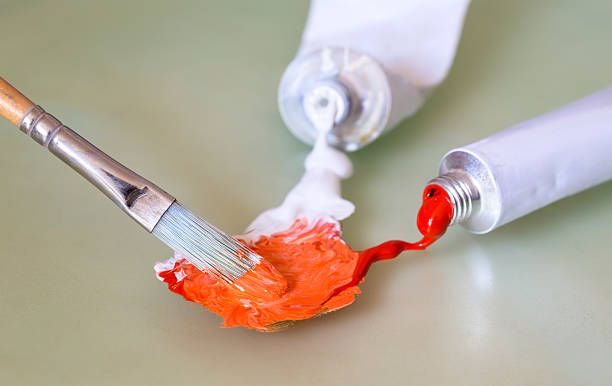betty@kaihong888.com

Get A Quote
Essential Guidelines for Fabric Painting Success
Preparation for Painting
Before diving into the artistic process, it's crucial to prepare the fabric adequately.
This involves pre-washing the fabric to eliminate any residual chemicals and starches that might hinder paint adhesion.
Avoiding fabric softeners is essential as they can compromise the fabric's absorbency.
Next, ironing out wrinkles ensures a flawless canvas for your artistic endeavors.
Besides, maintaining a tidy workspace not only fosters creativity but also prevents unwanted debris from marring your masterpiece.
When working with fabrics like t-shirts that have a distinct front and back, employing a protective barrier between the two layers is crucial to prevent paint from seeping through.
This simple yet effective technique ensures that your design remains intact without any unwanted color bleeding or smudging.
Choosing the Right Tools and Paints
Understanding Different Types of Fabric Paints
To embark on your fabric painting journey, it's essential to acquaint yourself with the diverse range of fabric paints available.
Understanding their properties is key to achieving desired results.
Selecting Appropriate Brushes and Tools
Equipping yourself with the right brushes and tools enhances your painting experience.
Opt for high-quality painting brushes, including acrylics brushes and palette knives, to facilitate smooth application and intricate detailing.
Beyond traditional brushes, consider experimenting with alternative painting tools to add texture and unique effects to your artwork.
Planning and Sketching Designs
Before applying paint to fabric, take some time to sketch out your design and choose a light coat of paint to make changes easier.
Also, practice your painting skills with scraps of fabric before tackling your main project.
This allows you to improve your skills and experiment without the risk of ruining the job you want.
Applying Painting Techniques
Incorporate standard painting techniques such as layering paints for depth, shading, highlighting, and adding finer details.
These techniques bring your fabric painting to life, adding dimension and complexity.
Meanwhile , experiment with free-painting acrylics for artistic freedom, stenciling and blocking for precision, and wet painting or spray painting for dynamic textures.
Color Mixing Tips
Ensure you have an ample amount of paint mixed for your project to avoid interruptions during the painting process.
Running out of mixed paint halfway through can disrupt your workflow and result in inconsistencies in color.
Different fabrics have varying levels of absorbency, which can affect how paint adheres to the surface.
Understanding the absorbency of your fabric allows you to adjust your painting technique accordingly for optimal results.
Practicing and Experimenting
Practice is key to mastering the art of fabric painting.
Dedicate time to experiment with different techniques and become familiar with how paint behaves on various types of fabric.
Explore the endless possibilities of fabric painting by experimenting with different techniques and types of paint.
Before diving into your main project, test your chosen paints on scraps of the fabric you intend to use.
This allows you to assess how the paint interacts with the fabric and make any necessary adjustments before applying it to your final piece.
Drying Considerations
Patience is key when it comes to drying painted fabric.
Allow sufficient time for the paint to dry completely before handling to prevent smudging or smearing.
Different types of fabric paints may require specific drying methods to set the paint effectively.
This includes heat setting for some paints and a cool rinse for others.
Familiarize yourself with the drying requirements of your chosen paint to ensure optimal results.
Drawing Inspiration for Designs
Exploring Line Art and Embroidery Designs
Draw inspiration from the intricate lines and patterns found in line art and embroidery.
These designs lend themselves beautifully to fabric painting, allowing you to create stunning and detailed pieces.
Incorporating Floral Patterns and Wreaths
Floral patterns and wreaths are timeless design motifs that add elegance and charm to fabric painting projects.
Experiment with different floral arrangements and color palettes to create eye-catching designs.
Adapting Designs from Coloring Books
Coloring books are a treasure trove of design inspiration.
Adapt and reinterpret designs from coloring books to suit your fabric painting projects.
This allows you to unleash your creativity while adding a personal touch to your artwork.
Conclusion
As you embark on your fabric painting journey, don't be afraid to let your creativity soar.
While it's important to adhere to best practices and guidelines, don't be afraid to push the boundaries and explore new ideas.
With patience, practice, and a willingness to experiment, you'll be well on your way to creating beautiful and unique fabric masterpieces.


